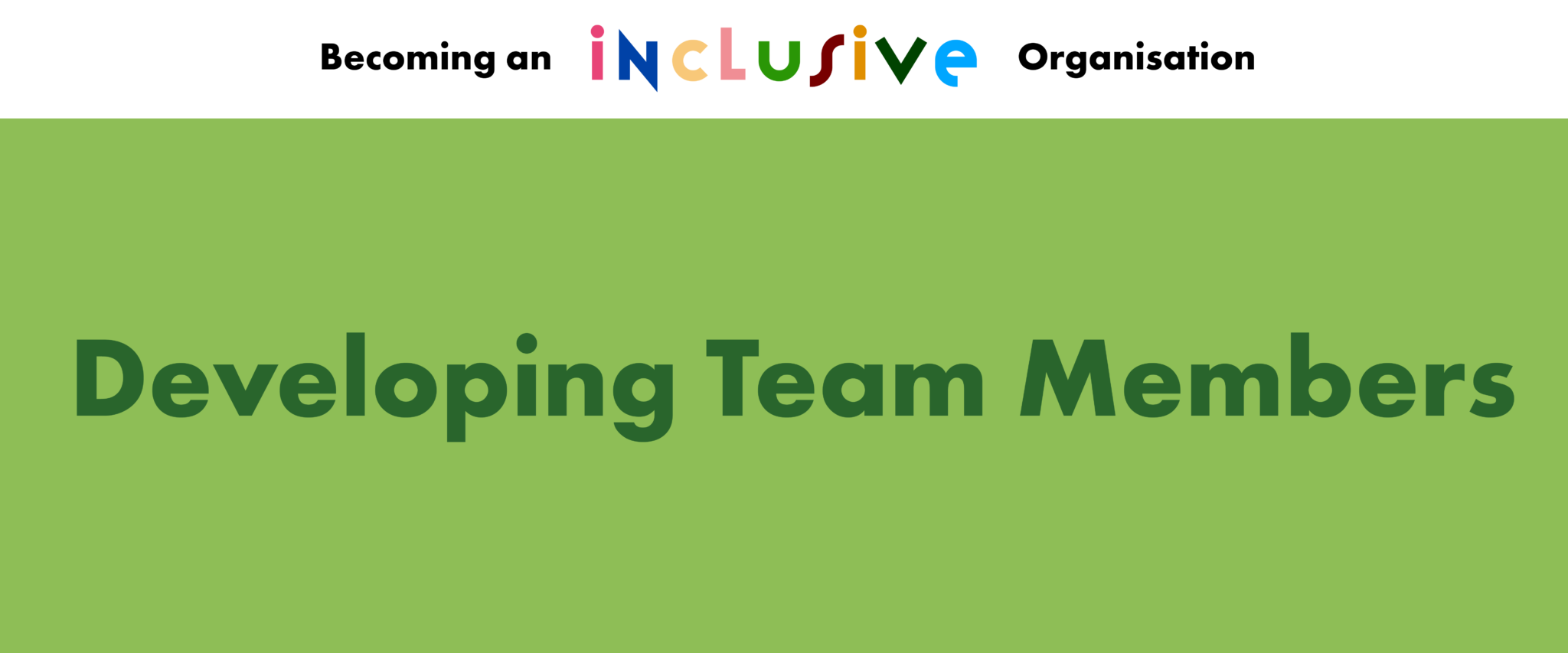Developing Team Members
20th June 2020

One of the critical responsibilities you as an inclusive manager have is to ensure that you provide fair and equal opportunities for all of your team members to shine, and develop their potential and talents.
The way in which you as a manager allocate work to your colleagues can have a critical impact on their development and their future promotion opportunities.
FAQs
In order to ensure that work allocation is free from bias and distributed fairly, you should be mindful of some key areas.
- What is the impact of affinity bias In this area?
Affinity bias: Research tells us that you are more likely to allocate a stretching project to a colleague with whom you have some kind of affinity. This could be based around personality or work style. Or it may be based on cultural similarities, or simply a shared love of a particular sporting activity.
- What kind of assumptions should managers avoid making?
Making assumptions: Some managers are prone to make assumptions about colleagues’ wants, needs and aspirations. For example, you may assume that a colleague who works part-time is less ambitions or indeed less committed, compared to those who work full-time. These kinds of assumptions can impact a manager’s behaviours and work allocation decisions.
- How does the halo/horns effect apply here?
The halo effect / horns effect: In addition to impacting recruitment decisions, the halo effect has been shown to influence the way managers develop their team members.
For instance, if a colleague has skills in communications, a manger may assume that they also have skills in unrelated areas such as report writing. The ‘horns’ effect plays out in the opposite direction; if a colleague has limited skills in communications, a manager may assume that their report writing skills are also under-par.
- How are remote-workers/agile team members affected?
Out of sight / out of mind: Due to the pressures of work, managers are more likely to allocate work to those colleagues in their immediate sights.
Of course, this can have an impact on remote or work-agile team members (or on those working in different offices or ‘cultural locations’ – for example, working in Dubai is a different cultural location then say Hong Kong, Tokyo or the UK).
How Regular?
Effective communication with team members is a great way to ensure that fair and inclusive development takes place. So how often should development meetings be held? Every month? Once a year? Or somewhere in between?
Instead of waiting for an annual performance review meeting, set up quarterly development meetings. The main purpose of these meetings is for you as a manager to gain feedback from your team members on their current and future development needs.
Drivers For Change
- Use 1:1s: Don’t make assumptions about your team members’ ambitions and career Use 1:1s and check-ins to discover individual motivators and development needs.
- Have a development plan: As a manager, you should work with individuals to create individual development This helps to ensure that you are following agreed outcomes, and not letting any hidden assumptions influence your work allocation or development decisions
- Be clear on roles and responsibilities: Ensure that both you and your team members are clear on individual roles and responsibilities. This helps to mitigate any ambiguity in work It provides you as a manager with a clear framework for your team development tasks.
- Watch out for bias: Ask yourself – do I make assumptions about skills and development areas? Could it be that the halo or horns effect, or the Out of Sight/Out of Mind principle, is influencing my perceptions and decisions?
Here to help
If you would like a free trial of any Marshall E-Learning course or find out more about our training courses please call +44 (0)845 123 3909 or get in touch using our contact form.


